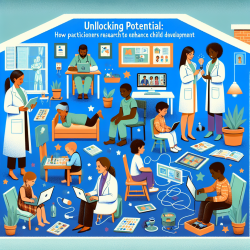In the realm of online therapy, especially for children, understanding and implementing attachment-related psychotherapy processes can significantly enhance therapeutic outcomes. The research article "Advances in research on attachment-related psychotherapy processes: seven teaching points for trainees and supervisors" by Talia, Taubner, and Miller-Bottome provides invaluable insights for practitioners. This blog distills key findings from the research and offers practical applications for therapists working in online settings.
Understanding Attachment in Therapy
Attachment theory, rooted in the work of John Bowlby, underscores the importance of secure relationships for mental health. Recent advancements in attachment-informed psychotherapy, particularly the Patient Attachment Coding System (PACS) and the Therapist Attunement Scales (TASc), offer robust tools for understanding and improving therapeutic interactions.
Key Research Findings
The PACS and TASc have shown that patients and therapists communicate differently based on their attachment classifications. These tools can predict attachment styles by analyzing in-session communication patterns, providing a more nuanced understanding of the therapeutic process.
Seven Teaching Points for Therapists
The research highlights seven key teaching points that can enhance therapist training and supervision:
- Attachment-Based Case Formulation: Utilize attachment theory to develop comprehensive case formulations, identifying core issues and therapeutic tasks.
- Process-Oriented Clinical Listening: Focus on how patients communicate, not just what they say, to better understand their attachment patterns.
- Identifying Countertransference Triggers: Recognize how different attachment styles can evoke specific emotional reactions in therapists, aiding in managing countertransference.
- Assessing Therapeutic Impasses: Use attachment markers to identify and address points of stagnation in therapy.
- Deliberate Practice Exercises: Engage in role-playing and other exercises to improve attunement and empathic responses.
- Mindfulness of Listening and Reactivity Patterns: Increase self-awareness of one’s communication style and its impact on the therapeutic process.
- New Supervisory Techniques: Tailor supervision to address the specific attachment-related needs of trainees, enhancing their overall effectiveness.
Practical Applications for Online Therapy
Implementing these insights in online therapy can be particularly beneficial for children, who may have unique attachment needs. Here are some practical steps:
- Utilize Technology: Use video sessions to observe non-verbal cues and communication patterns.
- Focus on Engagement: Create a secure and engaging online environment to foster trust and openness.
- Tailored Interventions: Adapt therapeutic interventions based on observed attachment markers to better meet the child's needs.
By integrating these attachment-informed strategies, online therapists can create more effective and supportive therapeutic environments for children, leading to better outcomes.
To read the original research paper, please follow this link: Advances in research on attachment-related psychotherapy processes: seven teaching points for trainees and supervisors.










